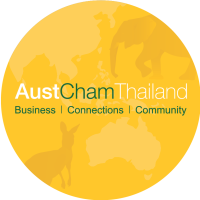By Ondine Ullman, Primary Leader of Language Acquisition, Bangkok Patana School
At our international school here in Bangkok, we have the privilege of a gloriously diverse linguistic landscape, with over 60 nationalities within our community speaking an even larger number of languages. For many of these children, using multiple languages is the norm, and for all of them, English is the medium of learning and sharing. The challenge for us as parents becomes how we understand and manage to maintain and nurture this linguistic diversity. Here are some key factors to consider:

Know your terminology
We often call our children ‘bilingual’, which technically means that they can use two different languages. It would be more accurate to refer to them as ‘multilingual’. Multilingualism refers to the use of more than one language, and therefore includes bilingualism, but also acknowledges that we have children that comfortably use three or even four languages.
Same, same but different
There are different forms of multilingualism and each one is as valid as the next. Ambilinguals have age-appropriate native level reading, writing, listening and speaking skills in each language. This is quite a feat and more common in children educated in bilingual schools. Unbalanced multilinguals have one age appropriate language, and then a second/subsequent language(s) that is not as well developed. They might read and write at a high level in these languages, but not at a native level and not as well as they can in English. Unbalanced multilinguals are very common in International Schools such as Bangkok Patana. Receptive multilinguals are able to understand a second language, but can’t really speak, read or write in it. Receptive multilinguals are very common, especially if only one parent speaks the language and language exposure is limited. Very often, if they are immersed back in the language, they begin to speak.
You have to have a plan
I know, I know…anyone who has ever talked with me about maintaining home language will know that this is my catch phrase. It’s essential that parents think ahead about what they want their children to do with language(s). If you want your child to be able to return to your home country and study, then they need native level literacy skills. Supporting this vision needs careful planning and access to specialised language learning support.
Your child will speak English back to you
This is perhaps the most frustrating aspect for many parents. How many of you speak to your child in your language, and they answer in English? Or perhaps siblings only speak to each other in English? Rest assured that you are not alone and that this is a very common aspect of raising multilingual children in an English-dominant environment. The danger is that this is the point at which many parents throw in the proverbial towel and give up with their home language, switching over to English only. Take a minute to consider that, when your child answers you back in English, they are showing you that they are understanding what you are saying, but they are responding in the language that has become the most dominant/comfortable for them. Take a deep breath, count to three, and carry on in your home language. The more you can model your language, and the more exposure you provide, the better off your child will be.
It’s not easy…but it’s worth it
Benjamin Franklin is purported to have said ‘Energy and persistence conquer all things’ and this, for me, sums up raising multilingual children. Because, truth be told, it does take a LOT of energy, and a LOT of persistence to continually provide language models and exposure. But you are handing your children the gift that keeps on giving. Studies have shown that multilinguals are better problem solvers and multitaskers (just think what their brains are doing when they listen in one language and reply in another), are more empathetic, find learning languages easier and have better attention spans than monolinguals.
Language needs context and modelling
Language needs context and practice. If you want to keep your home language strong, your children need a language model. The ideal is that the language model (which is usually a parent) never uses English with them, although it is perfectly fine to use it around them when speaking to others. Home language begins at home, and you can’t rely on language teachers alone to provide the scope of exposure that the children need. A strong home language supports the development of subsequent languages. Ways to increase exposure include home language television programmes, home language reading, skype chats with relatives in your home language, community and cultural gatherings, and returning to your home country for visits. Websites such as www.uniteforliteracy.com and www.childrenslibrary.org provide online books in multiple languages for free. At Bangkok Patana, support can be found from the Home Language ECAs and the Parent Home Language Helpers programme in the Primary School, ask if your school offers similar opportunities.
Don’t feel guilty – one size doesn’t fit all
Not everyone decides to raise their children as multilinguals, and that is their choice. Each family is unique and their needs are different. And for those of us that do raise our children with more than one language, be gentle on yourself. It’s different for everyone and there is no one-size-fits-all solution. Continue to do the best that you can and know that there are many of us right there with you.
Ondine Ullman has been working with EAL learners for over 20 years in Africa, Europe and Asia, and is passionate about the role of cultural identity, heritage and language, as well as in supporting parents in making informed decisions about their children’s language pathways. Ondine is an unbalanced multilingual married to an ambilingual and raising two gorgeous receptive bilinguals.




